Health Benefits Of Tomatoes: 19 Science-Backed Perks
Learn how this humble fruit helps boost your nutrition, health, and immunity.

Image: ShutterStock
The benefits of tomatoes are attributed to its antioxidants that can reduce the risk of heart disease, cancer, diabetes, etc. These edible berries are so commonly used across cuisines that it is hard to find a kitchen without them. They are scientifically known as Solanum lycopersicum, and they are native to the South and Central Americas. Tomatoes are grown in a wide range of varieties in various regions across the world with temperate climates. Some of the most popular variants include plum tomatoes, tomberries, cherry tomatoes, beefsteak tomatoes, and grape tomatoes.
They are also grown in numerous colors, ranging from red, yellow, black, and pink to purple, white, brown, and orange. Of course, red is the most common variety worldwide.
According to USDA’s Economic Research Service, tomatoes are among America’s top vegetable choices. In the year 2015, each US individual consumed an average of 156.3 pounds of fresh and processed vegetables. Out of these, fresh and canned tomato consumption was 28.3 pounds per person. Additionally, canned tomatoes were reported to be the leading canned vegetable consumed on the list.
The tomato has more to offer than merely providing nutrition, which is it is considered a functional food. Wondering what makes it so beneficial? Well, it is the all-powerful lycopene, an antioxidant that contributes to better health in many ways.
One surprising fact is that the Europeans had once mistaken this vegetable to be poisonous due to its shiny look. The Aztecs were said to be the first to use tomatoes for culinary purposes. As the centuries passed, their cultivation has crept into Asia, with India and China being the top producers of tomatoes now.
Consuming tomatoes is considered ideal for those who want to shed some pounds and keep their blood pressure under control. They also help manage diabetes and improve your vision. Above all, tomatoes are highly beneficial during pregnancy. Keep reading to learn about more such benefits of tomatoes!

 Did You Know?
Did You Know?In This Article
Health Benefits Of Tomatoes
Tomatoes are a nutrient-rich powerhouses, packed with vitamins, minerals, and antioxidants. With their high lycopene content, they contribute to a reduced risk of heart disease and cancer. The intake of tomatoes may also improve eye health, digestive health, and reduce risk of osteoporosis. Moreover, tomatoes offer versatility as an ingredient, suitable for raw, cooked, or canned consumption in a variety of dishes.
Are tomatoes good for you? Jesse Feder, Clinical Dietitian at the Memorial Regional Hospital, says, “Tomatoes contain a very powerful antioxidant called lycopene, which has been linked to improved heart health, reduced risk of certain cancers, and a reduction in inflammation throughout the body.”
He adds, “Additionally, tomatoes contain vital nutrients, such as vitamin K, folate, potassium, and vitamin C. These nutrients are involved in proper blood clotting, bone health, immune function, blood pressure, protein metabolism, digestion, and skin health. Tomatoes are a great source of insoluble fiber that can help clean your digestive tract, improve digestion/absorption of nutrients, and promote healthy bowel movements.”
Let’s take a look at the benefits of tomato in detail.
1. Tomatoes Help Prevent Cancer
According to the American Institute for Cancer Research, lycopene in tomatoes could be responsible for the fruit’s cancer prevention properties (1). Lycopene is an antioxidant in the carotenoid family. Its potent antioxidant properties have been found to neutralize free radicals that are generated in our bodies due to various reasons. Even laboratory studies show that tomato components have prevented the proliferation of several cancer cell types.
More importantly, one can enhance the cancer-fighting potential of tomatoes by taking them in a processed form – like the sauce, juice, or paste of tomatoes. Doing so allows the natural compounds in tomatoes to be more easily absorbed by the body. Also, processed forms of tomatoes have higher concentrations of lycopene (2).
However, it is important to consume a variety of foods (and not just tomatoes) to combat cancer, or any disease for that matter.
A study has also revealed the efficacy of tomatoes in preventing prostate cancer (1). But then, we don’t know if lycopene supplements have the same effect (3). And not just tomatoes in the processed form, but even those that are cooked can have better health effects.
Given their high antioxidant levels, tomatoes are a great choice for combating breast cancer (4). Adults with cancer participating in studies showed signs of cancer regression post lycopene supplementation. Higher lycopene intake has also been linked to a lower risk of lung, colon, oral, and cervical cancers.
Cancer cells can remain dormant for years until some chemical reaction triggers them and they attach themselves to the body’s blood supply. Lycopene was found to disrupt this linking process, thereby preventing the cancer cells from growing further (5).
Another reason tomatoes help fight cancer is adiponectin, a potent compound in the fruit.
2. Tomatoes Regulate Blood Pressure

The lycopene in tomatoes has also shown to reduce blood pressure (6).
Tomatoes are also rich in potassium, a mineral known to lower blood pressure levels (7). This is because potassium reduces the effects of sodium. In fact, the more potassium you consume, the more sodium you lose through urine, thus helping maintain low sodium levels in the body. Apart from this, potassium eases the tension in the walls of your blood vessels – further reducing blood pressure. According to the American Heart Association, the recommended intake of potassium for an average adult is 4,700 mg per day. But be careful not to consume too much of potassium as it might lead to kidney stones.
As per an Israeli study, short-term treatment with tomato extract can help lower blood pressure in patients. A controlled clinical trial published in the American Heart Journal examined the effects of tomato extract, containing natural antioxidants like lycopene, beta carotene, and vitamin E, on blood pressure in patients with grade-1 hypertension. The study involved 31 participants who first underwent a 4-week placebo period, followed by an 8-week treatment with 250 mg of Lyc-O-Mato (tomato extract), and another 4-week placebo period. The results showed a significant reduction in systolic blood pressure, from an average of 144 mm Hg to 134 mm Hg (P < .001), and diastolic blood pressure, from 87.4 mm Hg to 83.4 mm Hg (P < .05). The study concluded that a short-term treatment plan using the antioxidant-rich tomato extract can effectively lower blood pressure in patients with grade-1 hypertension who are not on medication (8).
Tomatoes are also rich in vitamin C that has been found to reduce blood pressure (10).
If they are not entirely ripened, you can store your tomatoes at room temperature. Once ripe, you can keep them in the refrigerator for up to three days. Beyond that, you can preserve them by freezing or canning (11). But the best option would be fresh tomatoes – as they are the richest in potassium and can have the best blood pressure-lowering effects (12).
3. Tomatoes Aid Weight Loss
also include supporting weight loss. As per a Chinese study, it can significantly reduce body weight, body fat, and waist circumference (13). It can also help in cholesterol reduction which can contribute to weight gain. Apart from being a great source of antioxidants, tomatoes are also rich in fiber and are low in calories. Hence, they promote satiety and even reduce calorie intake, thereby helping with weight loss.
4. Tomatoes Improve Skin And Hair Health
Tomatoes are an important ingredient in most beauty treatments. They help cure large pores, treat acne, soothe sunburn, and revive dull skin. The antioxidants in tomato, especially lycopene, fight cellular damage and skin inflammation.
Studies have shown that eating tomatoes also protects the skin from the ill effects of sun exposure. A study published in the Scientific Reports journal explored the protective effects of prolonged tomato consumption against UV-induced keratinocyte carcinoma. The research involved 180 SKH-1 hairless mice, which were fed diets supplemented with either tangerine or red tomato powder for 35 weeks. During weeks 11 to 20, 120 of these mice were exposed to UV-B light thrice weekly, while tumor development was monitored. Results showed a significant reduction in tumor numbers in male mice consuming red tomato diets. Carotenoid levels, including lycopene, were measured in plasma and skin, revealing higher skin lycopene levels in tangerine-fed mice despite a lower dietary dose. The study concludes that tomato consumption may reduce the risk of keratinocyte carcinomas, though the specific role of these phytochemicals warrants further research (14). Other studies have found an improvement in the skin’s ability to protect itself from the UV radiation in women who ate tomato paste.
According to one Boston study, antioxidants like lycopene help enhance skin health to a great extent (15). As per one report, lycopene is one of the few antioxidants with incredible photoprotective properties (16). The vitamin C in tomatoes can also improve hair health.
5. Tomatoes Are Good During Pregnancy
Vitamin C is one of the nutrients any woman needs during pregnancy to keep herself and her baby healthy. It aids the formation of healthy bones, teeth, and gums. This vitamin also assists in the proper absorption of iron in the body, another vital nutrient during pregnancy. Though taking iron supplements during pregnancy is advisable, eating tomatoes can have its benefits.
The lycopene in tomatoes offers protection against cell damage. Though the safety of lycopene supplements for pregnant women is still under question, the antioxidant from natural sources is very much safe for the women in need.
Including tomatoes in your diet can improve the bioavailability of iron (17). And according to the Centers for Disease Control and Prevention, the vitamin C in tomatoes helps protect both the woman and the baby (18).
6. Tomatoes Reduce Cholesterol And Promote Heart Health
It’s lycopene, again! Including lycopene-rich tomatoes regularly in your diet for a few weeks can cut down your LDL cholesterol (the bad cholesterol) levels by as much as 10%. To be more precise, you need to take at least 25 mg of lycopene a day. This could be about half a cup of tomato sauce. Also, 100 grams of tomato puree will give 21.8 mg of lycopene.
As per studies, individuals who consume fresh tomatoes or tomato juice can lower their bad cholesterol levels and increase the levels of good cholesterol (19). According to another Mexican study, consumption of raw tomatoes (14 servings a week for a month) can have a beneficial effect on cholesterol levels in overweight women (20).
One article by the Harvard Medical School includes tomatoes as one of the must-have foods for lowering cholesterol (21). And as per another study, the intake of lycopene every day can have similar effects as statins (any group of drugs for reducing cholesterol) in patients with elevated cholesterol levels (22).
Tomatoes are also rich sources of beta-carotene, folate, and flavonoids – all of which are beneficial for cardiovascular health. The nutrients in tomatoes also help reduce homocysteine and platelet aggregation, two phenomena that can have undesirable effects on heart health (23).
In another study by the University of Connecticut, tomato juice was found to possess cardioprotective abilities, which weren’t related to lycopene in any way (the revelation was made for the first time). Though the results are conflicting with what we have seen about lycopene so far, tomatoes still are one of those foods important for heart health (24).
Another study published in a report by Tufts University had found that men with high blood lycopene levels were found to be 55% less likely to suffer from a stroke. The findings remained consistent even after considering other factors like age, BMIi Body Mass Index, a health assessment method that calculates the height-to-weight ratio to determine how much body fat you possess. , LDL cholesterol, blood pressure, and smoking (25).
Lycopene is fat-soluble, which is why it is recommended to consume it with a little fat – as that is when it will be better absorbed by the body. Also, vine-ripened tomatoes are richer in lycopene than tomatoes ripened off the vine. So, pick your tomatoes wisely.
7. Tomatoes Counter The Effects Of Cigarette Smoke

Smoking leads to the excessive production of free radicals in the body, which can be very well countered with vitamin C. Which is why tomatoes can work great for smokers. Lower levels of vitamin C in this aspect can result in heart disease and cancer.
According to the National Institutes of Health, if non-smoking men and women regularly need 90 mg and 75 mg of vitamin C respectively, smokers need 35 mg more. Around 100 grams of raw tomatoes contain about 13.7 mg of vitamin C (26).
If you are a pregnant woman who smokes (which shouldn’t be the case in the first place), you have a higher need for vitamin C (27). Talk to your doctor for more information.
A report published by Cornell University found that the lycopene in tomatoes can scavenge up to 90% of the free radicals in the body (28).
8. Tomatoes Improve Vision
Tomatoes are rich in vitamin A, which is one reason they are excellent for maintaining eye health. The retinas of your eyes rely on vitamin A, and deficiency of the vitamin can, with time, cause blindness.
Lycopene in tomatoes counters free radical damage, which can otherwise affect your eyes. A study conducted in 2011 discovered that people with higher lycopene levels had a lower risk of age-related macular degenerationi An eye condition caused by a damaged macula affecting central vision, making it challenging to carry out daily tasks. . Lycopene also protects the eyes from sun damage.
Other eye-beneficial nutrients in tomatoes are vitamin C and copper. While the former might fight age-related cataractsi Gradual development of blurry vision as the eye's naturally clear lens becomes clouded, interfering with daily activities. , the latter helps produce melanin – the important black pigment in the eyes.
Lutein in tomatoes is to be talked about as well. It is a phytochemical, which is a carotenoid that is helpful for vision health (29). The beta-carotene in tomatoes, upon consumption, is converted into retinol – and this compound is essential for optimal vision (29).
A quick tip – if you are choosing tomatoes in the cooler months, go for the canned variety. This includes diced tomatoes, tomato juice, tomato paste, or whole peeled tomatoes. Canned tomatoes are richer in nutrients, and since it’s winter, might cost less as well. While shopping for canned tomatoes, go for the low-sodium variant.
9. Tomatoes Enhance Digestive Health
This health benefit of tomato is attributed to its chloride content, which is an essential component of digestive juices (30). One report also talks about the efficacy of lycopene in tomatoes in preventing gastric cancer (31). The fiber in tomatoes helps here too – 100 grams of tomatoes give you 2 grams of fiber (both soluble and insoluble fiber), further promoting gut health.
Eating antioxidant-rich foods like tomatoes can also help you deal with gastritis, a condition in which the stomach lining is inflamed (32).
10. Tomatoes Help Manage Diabetes
According to the American Diabetes Association, tomatoes are an important part of the diabetic diet. This is because they are rich in iron and vitamins C and E – all of which help relieve diabetic symptoms (33). Tomatoes also have a low glycemic index (the ability of a particular food to increase blood sugar levels), which can be a bonus for diabetics.
As per an Indian study, long-term supplementation of tomatoes was linked to beneficial effects in patients with diabetes mellitus. Though further research is warranted in this regard, the finding is promising (34). An Iranian study concluded that consuming 200 grams of raw tomatoes every day had a favorable effect on the blood pressure levels in type 2 diabetes patients (35).
The lycopene in tomatoes, along with other compounds, was also found to have a positive effect on the oxidative stress in diabetes patients. A meta-analysis study published in the Nutricion Hospitalaria journal reviewed the potential benefits of lycopene, an antioxidant found in tomatoes, for patients with type 2 diabetes (T2DM). The study analyzed data from 10 research articles, assessing the impact of lycopene on diabetes prevention, metabolic control, and complications. While lycopene intake raised its levels in the blood and reduced markers of oxidative stress, there was no strong evidence that it lowers the risk of developing T2DM. The study showed that lycopene may help reduce oxidative stress in those with diabetes. However, a lower risk of diabetic retinopathy was linked to the balance of different types of carotenoids, including lycopene (36).
11. Tomatoes May Prevent Urinary Stone Formation
According to another Turkey study, fresh tomato juice might help in preventing urinary stone formation (37).
12. Tomatoes Help Prevent Gallstones
As per a report by the Michigan State University, consuming tomatoes can reduce the risk of gallstones as well as kidney stones (38).
A few ways to incorporate tomatoes into your diet for preventing gallstones could be adding the canned or stewed versions to your soups and stews. You can also make fresh salsa and add tomatoes as a topping on salads, meat, or eggs.
13. Tomatoes Strengthen Bones

According to The Daily Telegraph, having just two glasses of tomato juice a day can strengthen your bones and prevent osteoporosis. However, the study that came up with the result was not done on a large scale, which is why further research is required in this area. Nonetheless, the possibilities are promising.
As already discussed, tomatoes are rich in beta-carotene. This nutrient, when ingested, turns into vitamin A – the vitamin that is essential for bone growth and maintenance (39).
The vitamin C in tomatoes is also crucial for bone formation and the synthesis of connective tissue. A deficiency of vitamin C can lead to underdeveloped bones. The vitamin has been linked to reduced bone loss in postmenopausal women as well (40). Even the lutein in tomatoes promotes collagen formation, which helps boost bone health.
Tomatoes are also rich in vitamin K, which, along with vitamin D, plays a pivotal role in bone metabolism. It also increases bone mineral density, thereby reducing the likelihood of fractures.
14. Tomatoes Enhance Your Immune System
In one study, a tomato-rich diet had enhanced the functioning of the white blood cells in test subjects. The white blood cells, which are known for fighting infections, sustained 38 percent less damage from free radicals. As per experts, the lycopene (and its antioxidant ability) in tomatoes might enhance this ability of the white blood cells.
According to a German study, supplementing a low-carotenoid diet with tomatoes might enhance immune function (41).
15. Tomatoes Reduce Inflammation
Tomatoes also contain three other antioxidants called zeta-carotene, phytofluene, and phytoene – which are found together in most brightly-colored fruits and veggies. These antioxidants help fight inflammation and the associated diseases like cancer and arthritis.
But there’s a catch. Earlier, we had seen that cooking or processing tomatoes enhances lycopene bioavailability. At the same time, the process also destroys these other significant antioxidants. The best way to go about it is to consume cooked/processed and raw tomatoes on a regular basis, and not just stick to one form.
Consuming tomato juice is equally beneficial in fighting inflammation. According to an Italian study, lycopene was found to exhibit anti-inflammatory behavior (42). However, more research is warranted in this regard.
A study published by the United States Department of Agriculture states that tomatoes (especially tomato powder) also contain apolycopenoids and certain other bioactive components that are way more effective than lycopene in fighting inflammation (43).
Harvard Medical School ranks tomatoes as one of the best foods for combating inflammation, and a must-have in everyone’s diet (44).
Cherry tomatoes can be a good addition too (a serving has just 27 calories). They are rich in flavonols that treat inflammation. You can simply roast whole cherry tomatoes with a few garlic cloves and crush them. Add the mixture to a whole wheat toast for a healthy and tasty snack.
Besides lycopene, the vitamin C in tomatoes also helps fight inflammation (45).
16. Tomatoes Boost Men’s Health
The lycopene in tomatoes was found to boost male fertility by as much as 70% (46). The antioxidant can also reduce the number of abnormal sperms. And not just that, it also improves sperm movement and reduces the damage to it.
As per a Boston study, weekly consumption of 2 to 4 servings of tomato sauce was found to reduce the risk of prostate cancer by 35% and advanced prostate cancer by 50% (47).
According to one study, men with the highest lycopene concentrations in their diets were found to have 59% lower risk of ischemic strokei A deadly condition in which a blood clot or constricted blood vessels limit the brain's blood supply, destroying brain cells. (the most common type of stroke) (48).
17. Tomatoes Enhance Brain Power

Your brain, given the high concentration of omega-3 fatty acids, is particularly vulnerable to damage by free radicals. Tomatoes, being rich in lycopene and beta-carotene and other antioxidants, can help combat this. In fact, tomatoes, when taken with olive oil, can have better effects. This is because the carotenoids in tomatoes are dissolved in fat (olive oil) and are easily absorbed by the blood.
The lycopene in tomatoes also helps prevent grave diseases like dementia and Alzheimer’s (49). According to an article published by the Western Governors University, tomatoes aid cognitive function and concentration (50).
A quick tip – when in the season, go for fresh tomatoes to reap the benefits of lycopene and other essential nutrients. And when not in the season (which is when the tomatoes appear pale and are tasteless), go for lycopene supplements (51).
18. Tomatoes Promote Liver Health
The lycopene in tomatoes scavenges the DNA-damaging agents, thereby promoting liver health. Tomatoes also contain certain B-complex vitamins that sustain liver health.
And here’s a super fact for you – the liver is the only organ in the human body that is capable of natural regeneration. It can regenerate lost tissue, and as much as 25% of the organ can regenerate into a whole liver if minor damage occurs (52). As we have seen, tomatoes protect the liver and help in liver detoxification.
According to one study, increased intake of tomato has been linked to a lowered risk of liver cancer (53). Tomato extract was also found to offer protection against liver inflammation caused by a high-fat diet. As per another Californian study, green tomato extracts containing tomatine (a toxic substance found in the stems and leaves of tomato plants) can inhibit the growth of liver cancer cells (54). Also, green tomatoes, like their red counterparts, are rich in vitamin K and B-complex vitamins that have similar benefits.
Lycopene in tomato is also associated with preventing alcoholic liver disease. A study published in the Archives of Biochemistry and Biophysics journal examined the protective effects of dietary tomato powder (TP) on alcohol-induced liver injuries in rodents. This research compared the impact of whole tomato powder (TP), tomato extract (TE), and purified lycopene (LYC) on alcoholic liver disease (ALD) development. The results showed that only the tomato powder significantly reduced liver damage. In contrast, the tomato extract had no effect on the injuries, while purified lycopene actually increased liver inflammation. Further testing in a mouse model also demonstrated that tomato powder reduced liver damage and prevented the development of preneoplastic liver lesions. These results suggest that whole tomato powder may be an effective dietary strategy to prevent alcohol-related liver disease (55).
19. Tomatoes For IBS
Tomatoes are a great source of nutrients, such as vitamin C, lycopene, and potassium (56). The intake of nutrients such as vitamin C and lycopene in moderation may be helpful for people with IBS due to their antioxidant properties.
If you are following a low FODMAP diet, a dietary approach designed to reduce symptoms of IBS, you might be wondering if tomatoes are safe to consume. While they are considered high FODMAP foods in general, cherry tomatoes are an exception to the rule. However, it is recommended to consult your healthcare provider before making any changes to your diet to avoid dietary sensitivities.
Had I known tomatoes are replete with such wonderful benefits, I would have made them my favorite from since my childhood.
Key Takeaways
- Tomatoes are nutrient-rich edible berries that are mainly used in cooking dishes or even consumed raw. They are available in different shapes and colors.
- They are high in lycopene content, which is known for its antioxidant properties and for lowering the risk of heart disease and cancer.
- Tomatoes may cause acid reflux when consumed in excess. Some people may also experience constipation due to the high fructose content, as well as stomach pain, and gas.
Nutritional Profile
| Tomatoes, sliced, raw 1.00 cup (180.00 grams) | ||
|---|---|---|
| Nutrient | Value | DRI/DV |
| Biotin | 24% | |
| Molybdenum | 20% | |
| Vitamin K | 7.9 µg | 16% |
| Potassium | 237 mg | 12% |
| Copper | 12% | |
| Manganese | 0.15 mg | 11% |
| Fiber | 9% | |
| Vitamin A | 833 IU | 8% |
| Vitamin B6 | 8% | |
| Vitamin B3 | 7% | |
| Folate | 15 µg | 7% |
| Phosphorus | 24 mg | 6% |
| Vitamin B | 16% | |
| Vitamin E | 0.54 mg | 6% |
| Magnesium | 11 mg | 5% |
| Chromium | 4% | |
| Iron | 0.3 mg | 3% |
| Zinc | 0.17 mg | 3% |
| Choline | 3% | |
| Pantothenic acid | 3% | |
*values sourced from USDA, tomatoes, red, ripe, rawThis table graphically depicts the most important nutrients present in tomatoes, with the %DV talking about the extent to which one can meet the daily requirement of that particular nutrient. Tomatoes are excellent sources of lycopene, beta-carotene, lutein, and vitamin C.
Well, this answers your question: What are tomatoes good for? Tomatoes are great. But it all depends on what kind of tomatoes you pick. Because we know what goes into the production of conventionally grown tomatoes – and it definitely is not something very healthy.
Which is why, organic tomatoes are better. Any given day.
Why Are Organic Tomatoes Better?
It’s common sense, if you ask me. Natural tomatoes contain more antioxidants. The antioxidants, especially the polyphenols, are formed in the tomatoes as they ripen. As organic tomatoes take a longer time to ripen (unlike the ones pumped with chemicals for quicker ripening), they are likely to have higher levels of polyphenols.
There was a study carried out by the research scientists from the University of Barcelona and the Institute of Health in Spain. The findings of the study stated that organic tomatoes had the upper hand. They had higher concentrations of flavones like phenolic and hydroxycinnamoylquinic acids, flavanones like naringenin, and flavonols like quercetin and rutin.
Organic tomatoes were also found to have double the concentration of kaempferol, another flavonoid with potent antioxidant properties.
This difference between organic and conventionally grown tomatoes, as per experts (one of them being Stephen Kaffka, a Ph.D. in Agronomy), could primarily depend on the way the two kinds of tomatoes are fertilized (57). Conventionally grown tomatoes receive commercial fertilizer made of soluble inorganic nitrogen. Plants take up this nitrogen very quickly and ripen fast. But the organically grown tomatoes get their nitrogen naturally from manure. This organic material must first be broken down by the microbes in the soil, post which the nitrogen is released to the plants. It takes time. The plants might grow slower, but they have more time to generate secondary plant metabolites or, in simple terms, the real healthy stuff like flavonoids.
Organic tomatoes also contain higher amounts of vitamin C (57% higher than that in conventionally grown tomatoes). Yes, they could be smaller, but they pack a higher dose of healthy nutrients. The fact that they are not treated with chemicals encourages the production of nutrients within the fruit.
More interestingly, organic tomatoes don’t receive any pesticides to protect the fruit from pests. This forces the tomatoes to fend for themselves.
Simply put – making life less easy for tomatoes (or any food, for that matter) can bring about improvements in quality.
Okay. So now you know which type of tomatoes is better. But, how are you going to pick the right one? And what about storage?
Selection And Storage
Make good use of your nose while picking tomatoes in the market. Smell the blossom end of the tomatoes (not the stem). The best ones will have a rich aroma.
Go for only those tomatoes that are round and feel heavy for their size. They must feel full. And have no bruises or blemishes. The skin of the tomatoes must be taut, not shriveled.
Coming to storage, ensure you put fresh and ripe tomatoes in a cool and dark place. You need to place them stem-side down, and use them within a few days.
Refrigeration is not recommended. Because it nullifies the flavor of the fruit. But if you must refrigerate, take it out an hour before using it.
Talking about canned tomatoes, if they are unopened, they must be used with 6 months. If opened, you can store them in a covered glass container in the refrigerator for up to a week. The leftover tomato paste or sauce can be refrigerated for up to 2 months.
How To Incorporate Tomatoes Into Your Diet?

Tomatoes can be cooked in sauces, mixed into soups, or eaten raw. However, studies show combining tomatoes with healthy fats, such as olive oil, increases the bioavailability of tomato’s lycopene. Meaning, that the body can absorb lycopene better if tomatoes are consumed with healthy fats (58).
For optimal flavor and nutrition, select ripe, in-season varieties. Their flavor and health benefits are increased when you add herbs like garlic, basil, or oregano. Tomato fermentation is an excellent alternative that yields foods high in probiotics and beneficial for digestion. Here are some ways in which you can enjoy tomatoes in your meals.
- Love omelets? Great! Add tomatoes to your next omelet. Top it with some spinach and mushrooms.
- Soup is always a great start to a meal. You can prepare a homemade soup with stewed tomatoes as the base. Not only is it tangy and appetizing but hot and delicious tomato soup benefits your overall health most satisfactorily during cold weather.
- You can make your own tomato salsa.
- You can add cherry tomatoes to your salad and make it more healthful.
- If you love pasta dishes, replace all those creamy sauces with something made of tomatoes. Tomatoes are very low in calories, and are rich in fiber, folate, vitamin C, and other antioxidants and phytonutrients. However, do remember not to overeat tomatoes. Overating of any food must be avoided..
There are infinite ways to include tomatoes in your diet. And since they are low in carbs (even a large tomato only has about 5 grams of carbs), you can happily fit them into your diet the way you want.
And wait, we have something more for you!
Tomato Recipes
1. Mediterranean Tomato Salad
What You Need
- 2 large tomatoes, ripe, and chopped into large pieces
- 1 medium-sized red onion
- 2 cloves of minced garlic
- 1 tablespoon of lemon juice
- 10 fresh basil leaves
- 3 tablespoons of extra virgin olive oil
- Salt and pepper, for taste
Directions
- Slice the onions and mince the garlic.
- After 5 minutes, toss all the ingredients together.
- Add salt and pepper for taste.
2. Fresh Tomato Salsa
What You Need
- 2 to 3 medium-sized tomatoes, fresh, with their stems removed
- ½ red onion
- 2 serrano chillies
- Juice of one lime
- ½ cup of chopped cilantro
- Salt and pepper, for taste
- A pinch each of dried oregano and ground cumin, for taste
Directions
- Firstly, chop the tomatoes, onions, and chillies. Ensure you avoid touching the cut peppers with bare hands. You can use disposable gloves for this purpose.
- Set aside a few of the seeds from the peppers. In case your salsa doesn’t turn out to be as hot as you want, you can add them.
- In a food processor, place all of the ingredients. Pulse until you finely dice the ingredients. In case you don’t have a food processor, you can dice them by hand.
- Place in a serving bowl. You can add salt and pepper for taste. If the chillies make the salsa too spicy, add some more of the chopped tomato. And if it’s not spicy enough, you can go ahead and add some of the seeds you had set aside initially.
- Add the dried oregano and ground cumin for taste.
 Quick Tip
Quick Tip3. Tomato Basil Soup
What You Need
- 4 cups of chopped tomatoes, seeded and peeled
- 4 cups of tomato juice (low sodium)
- 1 cup of 1% low-fat milk
- 1/3 cup of fresh basil leaves
- ¼ teaspoon of cracked black pepper
- ¼ teaspoon salt
- ½ cup of softened cream cheese
- 8 slices of diagonally cut French bread
Directions
- In a large saucepan, bring the tomatoes and the juice to a boil. Simmer uncovered for about 30 minutes.
- In a food processor, place the tomato mixture and basil.
- Return the pureed mixture to the pan.
- Stir in the milk, salt, and pepper.
- As you stir, add cream cheese and cook over medium heat until it turns thick.
- Ladle the soup into separate bowls.
- Serve with the French bread.
- You can refrigerate the remaining soup, but ensure you consume it within a week.
 Quick Tip
Quick TipNow you know all about the benefits of eating tomatoes, but that is just the good stuff about them. There is some not-so-good stuff too, which is as important to know.
Tomato Side Effects
As many as there are incredible benefits, there are also several side effects of tomatoes that you must be aware of to understand how to incorporate them into your diet. Read about them in detail below.
- Tomato Leaf Poisoning
Tomato leaves are unsafe. In large quantities, they are known to cause poisoning. Some research suggests that all the parts of the plant, except the tomato, could lead to digestive upset (59). As per anecdotal evidence, other symptoms of tomato leaf poisoning include severe irritation of the throat and mouth, dizziness, headache and, in severe cases, death.
- Acid Reflux
Tomatoes are naturally acidic. Consuming too many of them can cause acid reflux. If you constantly experience heartburn, which could be more than twice a week for a number of weeks, you must consult your doctor.
- Tomato Intolerance
Intolerance to tomatoes can cause stomach pain and gas. The symptoms, however, might vary from individual to individual.
- Constipation
Tomatoes have a high fructose content, and this causes issues in people suffering from fructose malabsorption. It can lead to constipation. Tomatoes (the soup, especially) also contain salicylates, glutamates, and amines – all of which are natural food chemicals that might trigger constipation.
- Considerations With Sodium
Canned tomatoes can be high in sodium – one cup of canned tomatoes contains 564 mg of sodium, while 1 cup of fresh tomatoes contains only 9 mg. Though canned tomatoes are as beneficial as the fresh ones, do take note of the sodium content.
Infographic: All About Tomato
The benefits of tomatoes are many, making them a delightful addition to your diet. These flavorful, savory berries are loved by many. You may enjoy them across several cuisines.
From the infographic below, you can learn more about tomatoes, their varieties, their global appeal, and popular alternatives.
Some thing wrong with infographic shortcode. please verify shortcode syntax
The benefits of tomatoes are mostly attributed to their antioxidant potential, thanks to lycopene and other bioactive compounds. Antioxidant properties of tomatoes help reduce the risk of chronic diseases like cancer and heart disease, while consuming them often can also help manage cholesterol, blood pressure, and contribute to blood sugar control. Besides, they promote the health of the brain, liver, skin, immunity system, and whatnot! Go for organic tomatoes for better benefits as they have a higher antioxidant potential. On the other hand, these berries may have side effects like acid reflux, constipation, etc. However, their benefits completely outdo these negative effects.
Frequently Asked Questions
Do tomatoes clean your lungs?
Jesse Feder explains, “Tomatoes contain the powerful antioxidant lycopene, which has been linked to improving lung function for those with COPD, asthma, bronchitis, and emphysema. This is due to its anti-inflammatory properties. Tomatoes can reduce inflammation in the lungs and alleviate symptoms associated with certain lung diseases/infections.”
Is tomato a blood thinner?
According to Feder, “Tomato is a great source of vitamin K, which is involved in blood clotting. It is actually recommended that if you are taking a blood-thinning medication, to limit the amount of vitamin K-containing foods. This is to make sure you do not mess with the medications’ effects on the blood. Some studies, however, have shown that tomato juice/extract has blood-thinning properties.”
Is tomato a vegetable or a fruit?
Technically, it is a fruit as it contains seeds. But most cookbooks refer to it as a vegetable.
To be frank, it doesn’t matter. What matters is if you include it in your diet – because the benefits are amazing.
How much sugar does a tomato contain?
One whole tomato contains about 4.75 grams of sugar.
What are the benefits of eating tomatoes at night?
The same benefits you would have by eating tomatoes any time of the day. One additional advantage could be weight loss, which is attributed to lycopene. A theory suggests that lycopene releases the growth hormone in your body, which results in fat breakdown, giving a boost to your metabolism.
Now, there is no research behind this, yet. So, we are not sure how true the theory is.
What are the benefits of eating one tomato daily?
The benefits we saw in this post. Simple.
Why are tomatoes red?
Tomatoes are green before they ripen. But as they ripen, due to the breakdown of chlorophyll, which synthesizes a red carotenoid (lycopene), they turn red. When ripe, lycopene can be seen as the dominant color of tomatoes.
What are the benefits of sun dried tomatoes?
One advantage sun dried tomatoes might have over their counterparts is they don’t deteriorate as rapidly. Because there is very less moisture content. Otherwise, their benefits are similar (and superb) to normal tomatoes.
What are Roma tomatoes and how many calories do they contain?
Roma tomatoes are one variety of the fruit. Also known as Italian or plum tomatoes, they contain just about 35 calories per serving.
What are heirloom and grape tomatoes?
Heirloom tomatoes are an open-pollinated variety of tomatoes. They contain 40 calories per serving. Grape tomatoes are originally from Southeast Asia, and they appear similar to the oval plum tomatoes. One grape tomato offers just about 5 calories, and a cupful of those tomatoes has about 30 calories, making it an excellent low calorie food.
What other important nutrients do tomatoes contain?
One raw tomato contains about 1.5 grams of fiber, most of which is in the form of insoluble fiber.
And they contain protein too – though not in a large quantity. Half a cup of tomatoes contains just about 1 gram of protein.
Talking about iron, a cup of chopped tomatoes contains just about 0.49 mg of the mineral.
Are tomato seeds harmful?
They are practically harmless. But in case you are suffering from kidney or prostate disorders, stay away from them as certain studies suggest against their intake. Do consult your doctor.
Any interesting tomato facts?
Yes, there are quite a few of them!
• Botanically speaking, tomato is a fruit (we already have seen that). But the government had classified it as a vegetable back in the late 1800s in order to tax it..
• The world’s largest tomato tree was grown at the Walt Disney World Resort. It produced a whopping 32,000 tomatoes in the first 16 months.
• The Aztec name for tomatoes means ‘plump thing with a navel’.
• You can’t grow tomatoes from the seeds of hybrid tomatoes. If you want to grow identical tomatoes, you must get the seeds from the heirlooms.
Stock up on tomatoes today! That’s all we’ve got to say!
Do tell us how this post has helped you. Leave a comment in the box below.
Illustration: Health Benefits Of Tomatoes, How To Consume, And Recipes
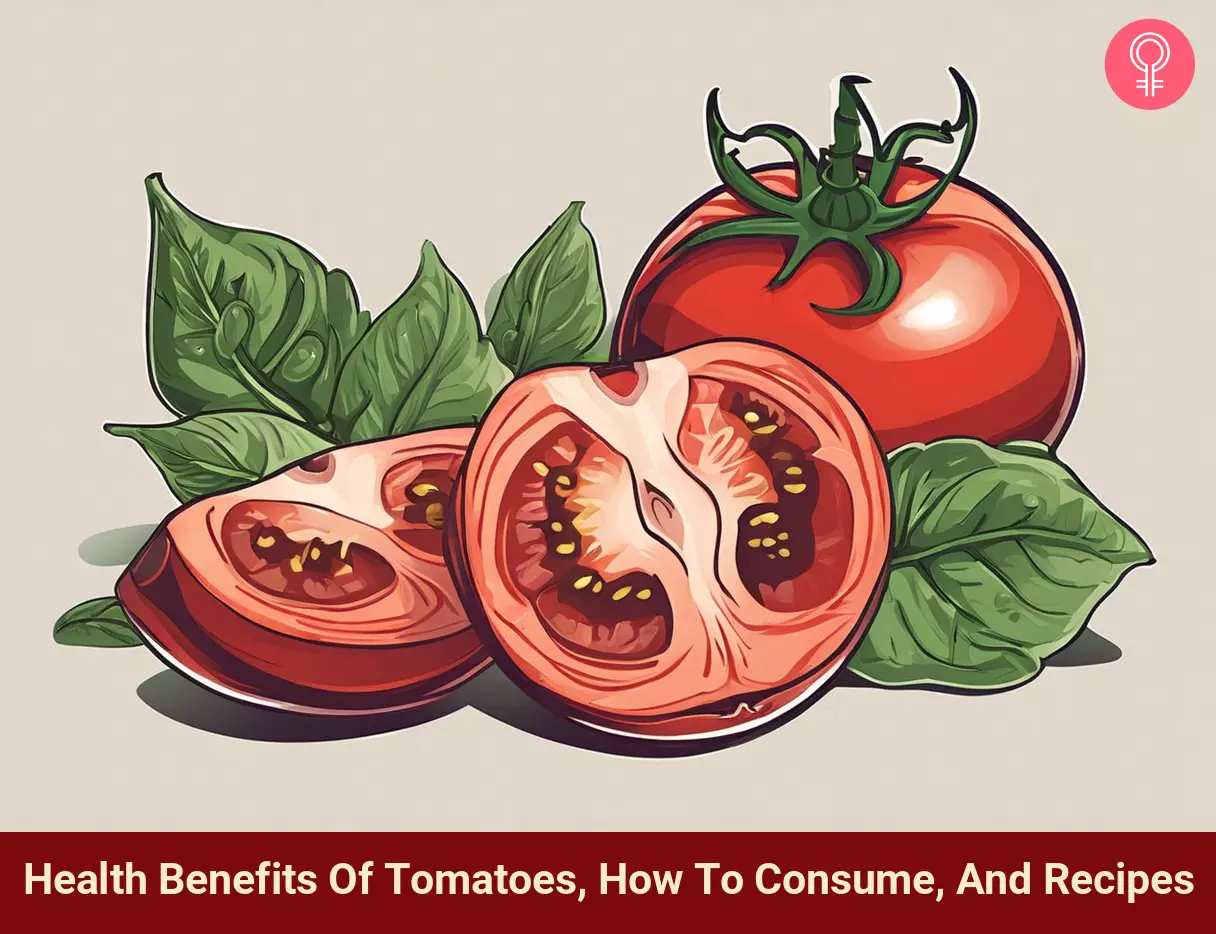
Image: Stable Diffusion/StyleCraze Design Team
References
Articles on StyleCraze are backed by verified information from peer-reviewed and academic research papers, reputed organizations, research institutions, and medical associations to ensure accuracy and relevance. Read our editorial policy to learn more.
- Tomatoes, Other Foods Containing Lycopene May Protect Against Prostate Cancer, Study Finds, American Institute for Cancer Research.
https://www.aicr.org/news/tomatoes-other-foods-containing-lycopene-may-protect-against-prostate-cancer-study-finds/ - Tomato Lycopene and Lung Cancer Prevention: From Experimental to Human Studies, Cancers, US National Library of Medicine, National Institutes of Health.
https://www.ncbi.nlm.nih.gov/pmc/articles/PMC3757421/ - New evidence that a heart-healthy diet also helps fight prostate cancer, Harvard Medical School.
https://www.health.harvard.edu/mens-health/new-evidence-that-a-heart-healthy-diet-also-helps-fight-prostate-cancer - Tomato lycopene and its role in human health and chronic diseases, CMAJ, US National Library of Medicine, National Institutes of Health.
https://www.ncbi.nlm.nih.gov/pmc/articles/PMC80172/ - The Potential Role of Lycopene for the Prevention and Therapy of Prostate Cancer: From Molecular Mechanisms to Clinical Evidence, International Journal of Molecular Sciences, US National Library of Medicine, National Institutes of Health.
https://www.ncbi.nlm.nih.gov/pmc/articles/PMC3742263/ - Lycopene and Vascular Health, Frontiers in Pharmacology, US National Library of Medicine, National Institutes of Health.
https://www.ncbi.nlm.nih.gov/pmc/articles/PMC5974099/ - How Potassium Can Help Control High Blood Pressure, American Heart Association.
https://www.heart.org/en/health-topics/high-blood-pressure/changes-you-can-make-to-manage-high-blood-pressure/how-potassium-can-help-control-high-blood-pressure#.WUosWsx943V - Natural antioxidants from tomato extract reduce blood pressure in patients with grade-1 hypertension: a double-blind, placebo-controlled pilot study, American Heart Journal, US National Library of Medicine, National Institutes of Health.
https://pubmed.ncbi.nlm.nih.gov/16368299/ - Lycopene Supplement and Blood Pressure: An Updated Meta-Analysis of Intervention Trials, Nutrients, US National Library of Medicine, National Institutes of Health.
https://www.ncbi.nlm.nih.gov/pmc/articles/PMC3798929/ - Tomato Extract for Hypertension?: Editorial to “The Effects of Natural Antioxidants from Tomato Extract in Treated but Uncontrolled Hypertensive Patients” by E. Paran et al.”, Cardiovascular Drugs and Therapy, Researchgate.
https://www.researchgate.net/publication/24012703_Tomato_Extract_for_Hypertension_Editorial_to_The_Effects_of_Natural_Antioxidants_from_Tomato_Extract_in_Treated_but_Uncontrolled_Hypertensive_Patients_by_E_Paran_et_al - Tomatoes are a healthy summer favorite, Michigan State University.
https://www.canr.msu.edu/news/tomatoes_are_a_healthy_summer_favorite - Tomatoes and the science behind them, Michigan State University.
https://www.canr.msu.edu/news/tomatoes_and_the_science_behind_them - Tomato juice supplementation in young women reduces inflammatory adipokine levels independently of body fat reduction, Nutrition, US National Library of Medicine, National Institutes of Health.
https://pubmed.ncbi.nlm.nih.gov/25837214/ - Tomatoes protect against development of UV-induced keratinocyte carcinoma via metabolomic alterations, Scientific Reports, US National Library of Medicine, National Institutes of Health.
https://www.ncbi.nlm.nih.gov/pmc/articles/PMC5506060/ - The role of phytonutrients in skin health, Nutrients, US National Library of Medicine, National Institutes of Health.
https://pubmed.ncbi.nlm.nih.gov/22254062/ - Supplements for Skin Health Clinical Tool, Ebling Labs.
http://projects.hsl.wisc.edu/SERVICE/modules/24/M24_CT_Supplements_for_Skin_Health.pdf - Iron Deficiency in Pregnancy and the Rationality of Iron Supplements Prescribed During Pregnancy, The Medscape Journal of Medicine, US National Library of Medicine, National Institutes of Health.
https://www.ncbi.nlm.nih.gov/pmc/articles/PMC2644004/ - Are You Pregnant?
https://www.cdc.gov/lead-prevention/communication-resources/are-you-pregnant.html - An Update on the Health Effects of Tomato Lycopene, Annual Review of Food Science and Technology, US National Library of Medicine, National Institutes of Health.
https://www.ncbi.nlm.nih.gov/pmc/articles/PMC3850026/ - Effect of tomato consumption on high-density lipoprotein cholesterol level: a randomized, single-blinded, controlled clinical trial, Diabetes, Metabolic Syndrome and Obesity: Targets and Therapy, US National Library of Medicine, National Institutes of Health.
https://www.ncbi.nlm.nih.gov/pmc/articles/PMC3735277/ - How to lower your cholesterol without drugs, Harvard Medical School.
https://www.health.harvard.edu/heart-health/how-to-lower-your-cholesterol-without-drugs - Protective effect of lycopene on serum cholesterol and blood pressure: Meta-analyses of intervention trials, Maturitas, The European Menopause Journal.
https://www.maturitas.org/article/S0378-5122(10)00446-9/abstract - Tomatoes and cardiovascular health, Critical Reviews in Food Science and Nutrition, US National Library of Medicine, National Institutes of Health.
https://pubmed.ncbi.nlm.nih.gov/12587984/ - Lycopene, tomatoes, and coronary heart disease, Free Radical Research, US National Library of Medicine, National Institutes of Health.
https://pubmed.ncbi.nlm.nih.gov/16032783/ - “Tomatoes Lower Mens Stroke Risk”, Tufts University.
https://www.nutritionletter.tufts.edu/healthy-eating/tomatoes-lower-mens-stroke-risk/ - Tomatoes, red, ripe, raw, year round average, US Department of Agriculture.
https://fdc.nal.usda.gov/food-details/170457/nutrients - Vitamin C, US National Library of Medicine.
https://medlineplus.gov/ency/article/002404.htm - Study: Tomato, wine byproducts in filters could make cigarettes less toxic, Cornell Chronicle, Cornell University.
https://news.cornell.edu/stories/2012/01/researchers-make-less-carcinogenic-cigarette - Enhancing the Health-Promoting Effects of Tomato Fruit for Biofortified Food, Mediators of Inflammation, US National Library of Medicine, National Institutes of Health.
https://www.ncbi.nlm.nih.gov/pmc/articles/PMC3972926/ - Chloride in diet, US National Library of Medicine.
https://medlineplus.gov/ency/article/002417.htm - Anticancer Effect of Lycopene in Gastric Carcinogenesis, Journal of Cancer Prevention, US National Library of Medicine, National Institutes of Health.
https://www.ncbi.nlm.nih.gov/pmc/articles/PMC4492364/ - Vitamin C, Gastritis, and Gastric Disease: a historical review and update, Digestive Diseases and Sciences, US National Library of Medicine, National Institutes of Health.
https://www.ncbi.nlm.nih.gov/pmc/articles/PMC3874117/ - Diabetes Superfoods, American Diabetes Association.
https://diabetes.org/food-nutrition/food-and-blood-sugar/diabetes-superstar-foods - Effect of long term supplementation of tomatoes (cooked) on levels of antioxidant enzymes, lipid peroxidation rate, lipid profile and glycated haemoglobin in Type 2 diabetes mellitus, The West Indian Medical Journal, US National Library of Medicine, National Institutes of Health.
https://pubmed.ncbi.nlm.nih.gov/17249316/ - The effects of tomato consumption on serum glucose, apolipoprotein B, apolipoprotein A-I, homocysteine and blood pressure in type 2 diabetic patients, International Journal of Food Sciences and Nutrition, US National Library of Medicine, National Institutes of Health.
https://pubmed.ncbi.nlm.nih.gov/21138408/ - [Meta-analysis on the role of lycopene in type 2 diabetes mellitus], Nutricion Hospitalaria, US National Library of Medicine, National Institutes of Health.
https://pubmed.ncbi.nlm.nih.gov/22411366/ - Medical and alternative therapies in urinary tract stone disease, World Journal of Nephrology, US National Library of Medicine, National Institutes of Health.
https://www.ncbi.nlm.nih.gov/pmc/articles/PMC4635369/ - Tomatoes provide many health benefits, Michigan State University.
https://www.canr.msu.edu/news/tomatoes_provide_many_health_benefits - Vitamin A, National Institutes of Health.
https://ods.od.nih.gov/factsheets/VitaminA-HealthProfessional/ - Fruits and Bone Health, University of Arkansas.
https://www.uaex.edu/publications/PDF/FSFCS83.pdf - Supplementation of a low-carotenoid diet with tomato or carrot juice modulates immune functions in healthy men, Annals of Nutrition & Metabolism, US National Library of Medicine, National Institutes of Health.
https://pubmed.ncbi.nlm.nih.gov/14520020/ - Tomato Lycopene and Inflammatory Cascade: Basic Interactions and Clinical Implications, Current Medicinal Chemistry, US National Library of Medicine, National Institutes of Health.
https://pubmed.ncbi.nlm.nih.gov/20491642/ - BIOACTIVE COMPONENTS OF TOMATO AND THEIR ANTI-INFLAMMATORY ACTION, United States Department of Agriculture.
https://portal.nifa.usda.gov/web/crisprojectpages/1005661-bioactive-components-of-tomato-and-their-anti-inflammatory-action.html - Foods that fight inflammation, Harvard Medical School.
https://www.health.harvard.edu/staying-healthy/foods-that-fight-inflammation - Inflammation, Oregon State University.
https://lpi.oregonstate.edu/mic/health-disease/inflammation - Lycopene and male infertility, Asian Journal of Andrology, US National Library of Medicine, National Institutes of Health.
https://www.ncbi.nlm.nih.gov/pmc/articles/PMC4023371/ - A review of epidemiologic studies of tomatoes, lycopene, and prostate cancer, Experimental Biology and Medicine, US National Library of Medicine, National Institutes of Health.
https://pubmed.ncbi.nlm.nih.gov/12424325/ - Stroke and Nutrition: A Review of Studies, US National Library of Medicine.
https://www.ncbi.nlm.nih.gov/pmc/articles/PMC3678213/ - Lycopene and cognitive function, Journal of Nutritional Science, US National Library of Medicine, National Institutes of Health.
https://www.ncbi.nlm.nih.gov/pmc/articles/PMC6558668/ - Brain fuel: 5 food groups for successful students, Western Governors University.
https://www.wgu.edu/blog/brain-fuel-5-food-groups-successful-students1712.html - Foods that make you smarter, Mercer County Community College.
https://www.mccc.edu/pdf/eng024/Class%208/20%20foods%20that%20make%20you%20smarter.pdf - Livers skip stem cells, build missing structures from scratch via direct cell identity conversion, California Institute for Regenerative Medicine.
https://blog.cirm.ca.gov/2018/05/02/livers-skip-stem-cells-build-missing-structures-from-scratch-via-direct-cell-identity-conversion/ - Effect of tomato extract supplementation against high-fat diet-induced hepatic lesions, Hepatobiliary Surgery and Nutrition, US National Library of Medicine, National Institutes of Health.
https://www.ncbi.nlm.nih.gov/pmc/articles/PMC3834971/ - Tomatine-containing green tomato extracts inhibit growth of human breast, colon, liver, and stomach cancer cells, Journal of Agricultural and Food Chemistry, US National Library of Medicine, National Institutes of Health.
https://pubmed.ncbi.nlm.nih.gov/19514731/ - Dietary tomato powder inhibits alcohol-induced hepatic injury by suppressing cytochrome p450 2E1 induction in rodent models, Archives of Biochemistry and Biophysics, US National Library of Medicine, National Institutes of Health.
https://pubmed.ncbi.nlm.nih.gov/25592162/ - Nutrient content of tomatoes and tomato products
https://pubmed.ncbi.nlm.nih.gov/9605204/ - Are Organic Tomatoes Better?, National Public Radio.
https://www.npr.org/2008/05/29/90914182/are-organic-tomatoes-better - Common Poisonous Plants, The University of Arizona.
https://extension.arizona.edu/programs/cochise-county-master-gardeners
Read full bio of Dr. Geeta Dharmatti
- Jesse Feder, RDN/LDN, is a Clinical Dietitian at the Memorial Regional Hospital. He is also a certified by the American College of Sports Medicine as a personal trainer (ACSM-CPT) and the National Strength and Conditioning Association as a Certified Strength and Conditioning Specialist (NSCA-CSCS).
 Jesse Feder, RDN/LDN, is a Clinical Dietitian at the Memorial Regional Hospital. He is also a certified by the American College of Sports Medicine as a personal trainer (ACSM-CPT) and the National Strength and Conditioning Association as a Certified Strength and Conditioning Specialist (NSCA-CSCS).
Jesse Feder, RDN/LDN, is a Clinical Dietitian at the Memorial Regional Hospital. He is also a certified by the American College of Sports Medicine as a personal trainer (ACSM-CPT) and the National Strength and Conditioning Association as a Certified Strength and Conditioning Specialist (NSCA-CSCS).
Read full bio of Ravi Teja Tadimalla
Read full bio of Arshiya Syeda
Read full bio of Aparna Mallampalli






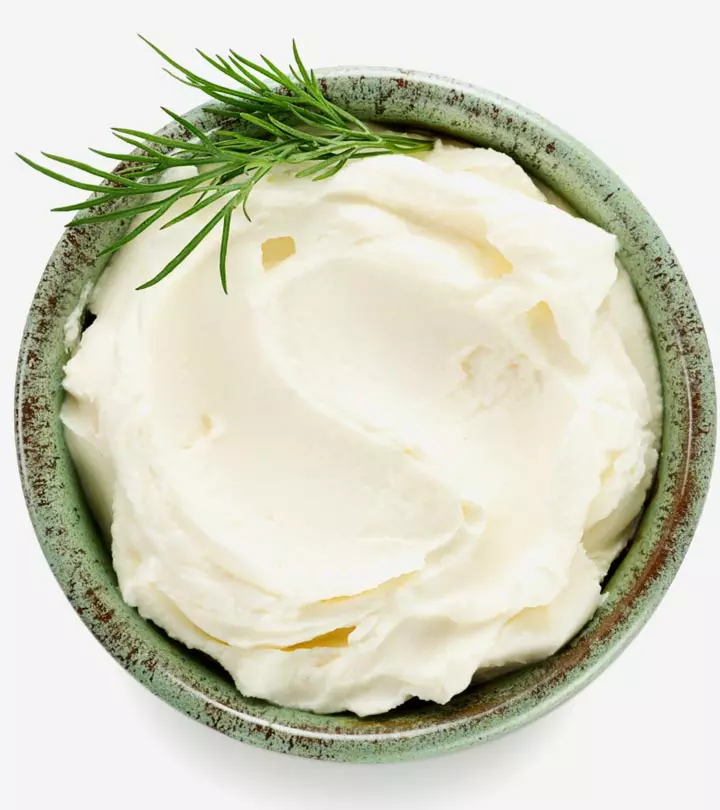


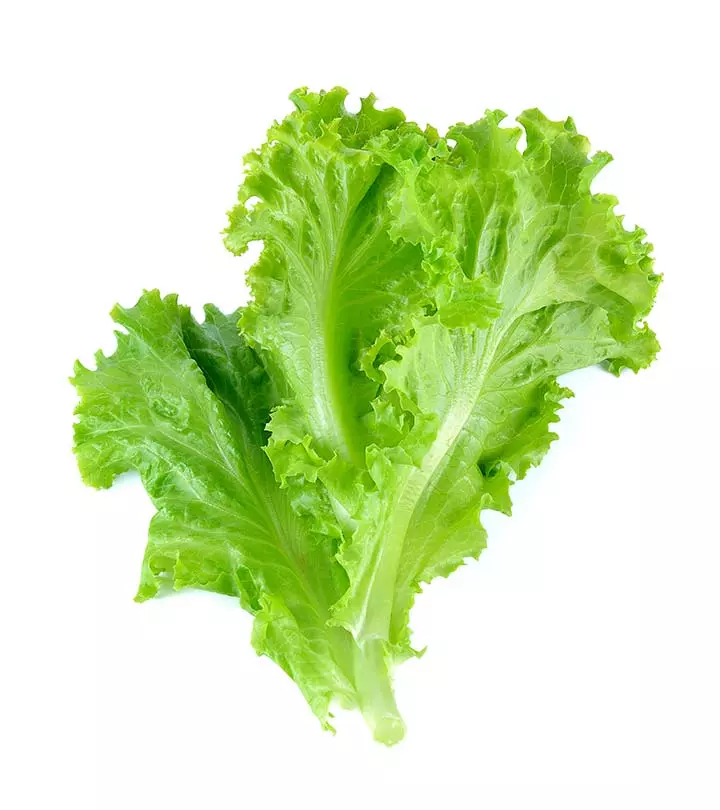

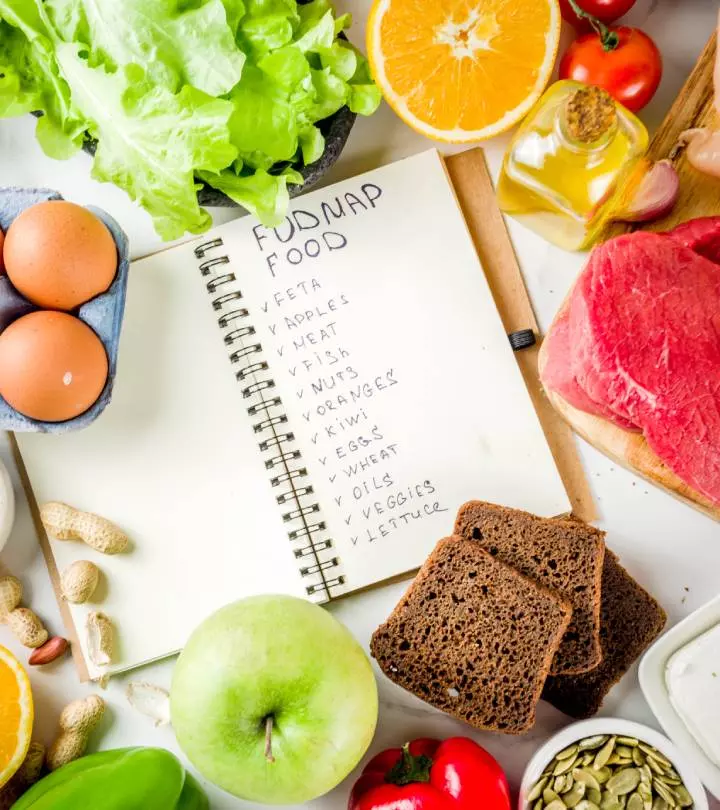

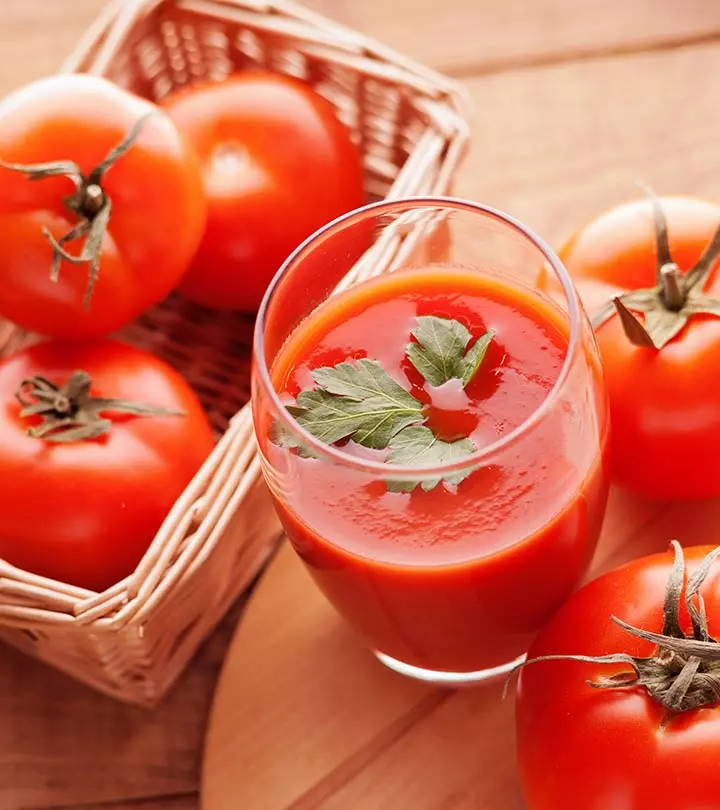


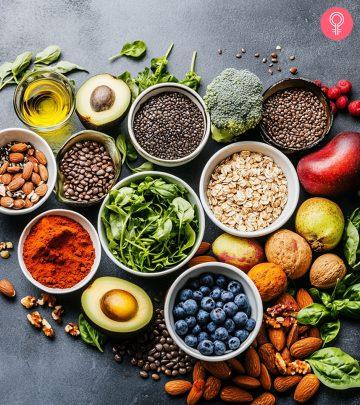
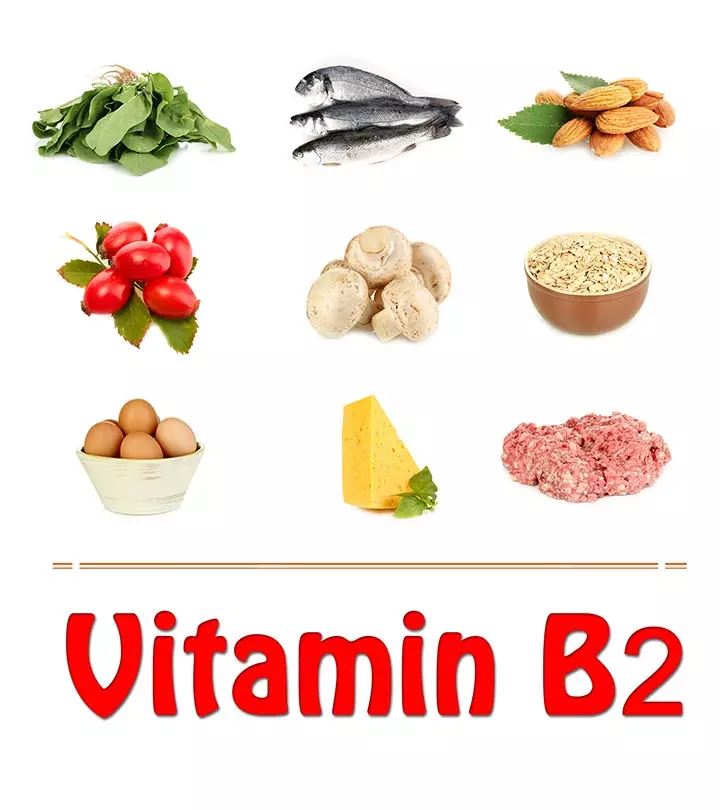
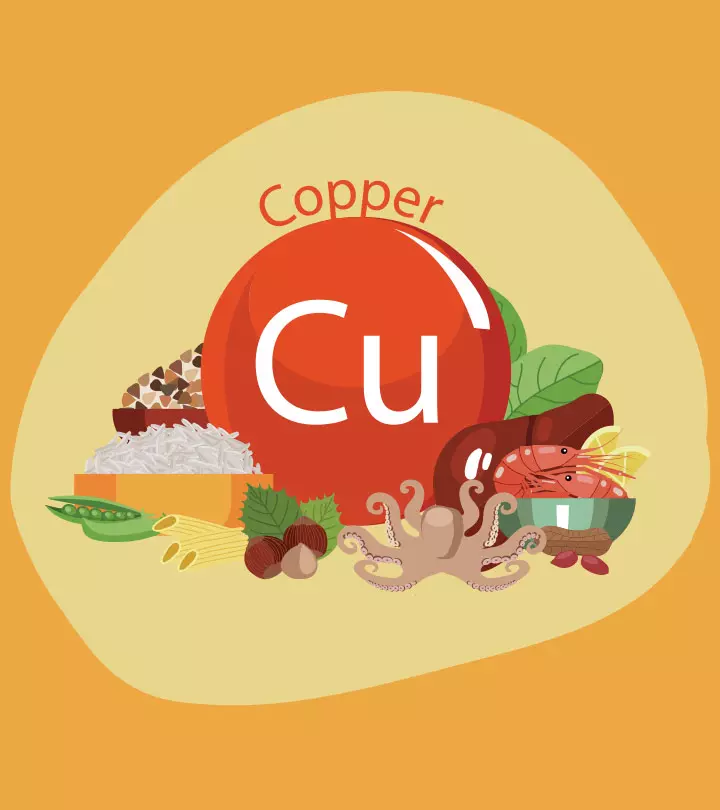
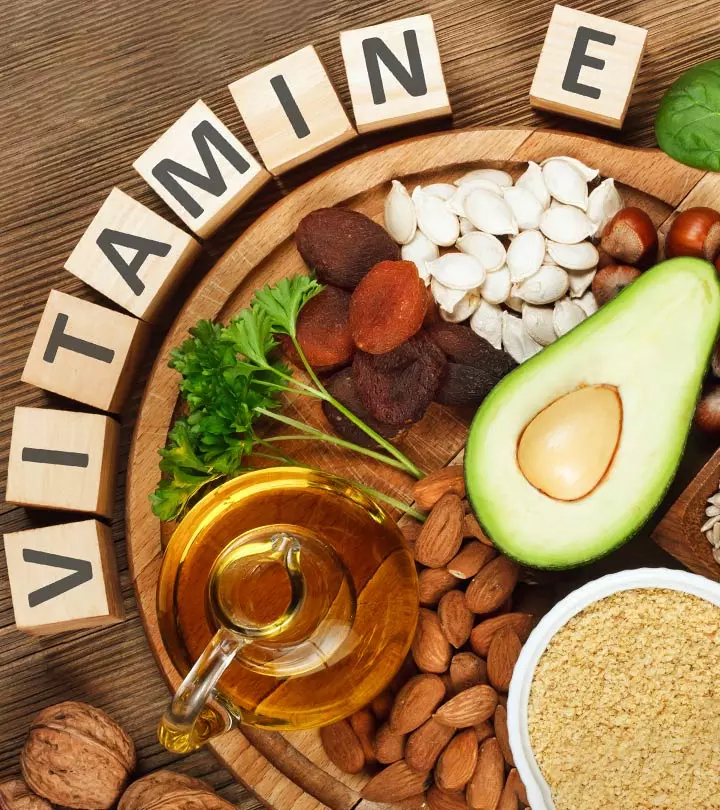

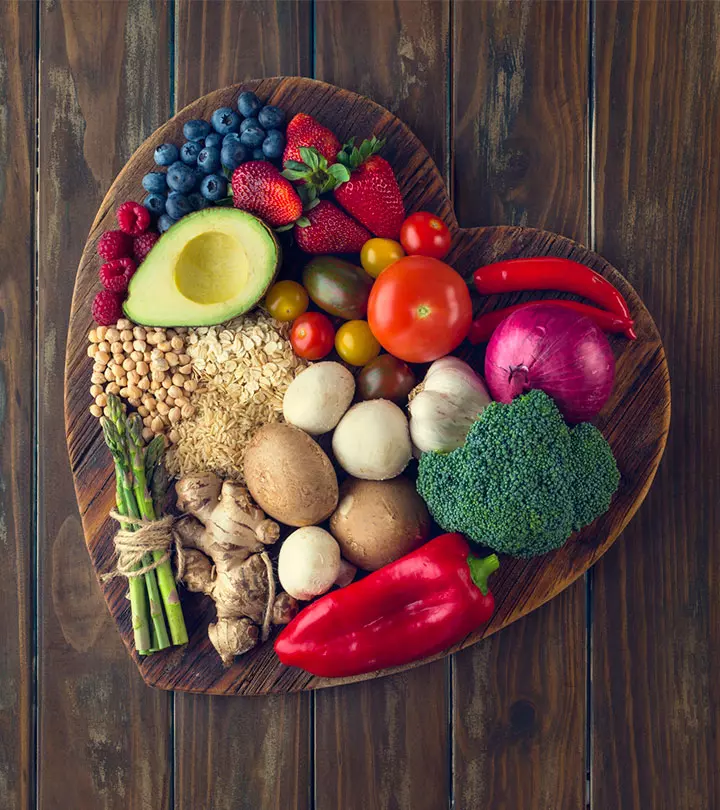
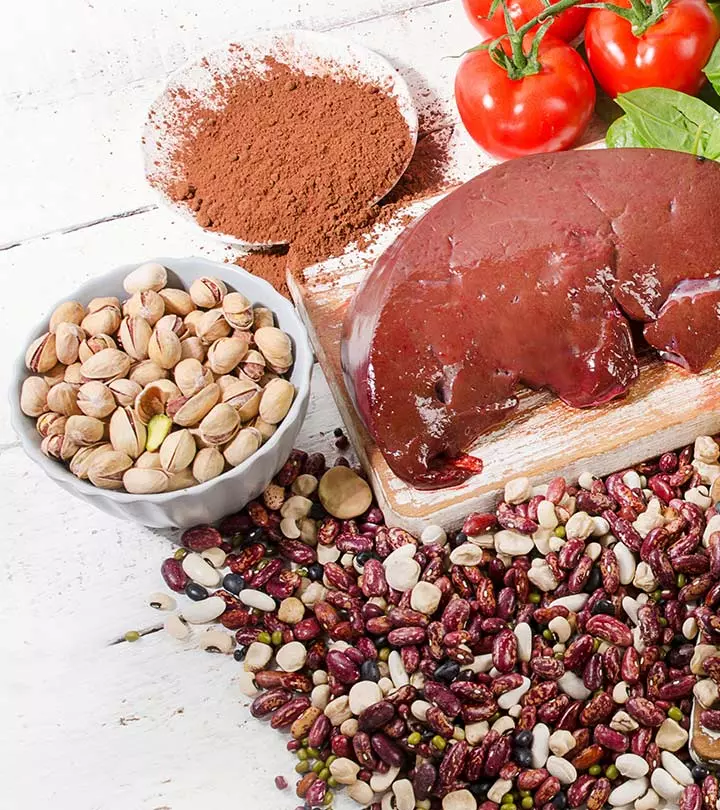
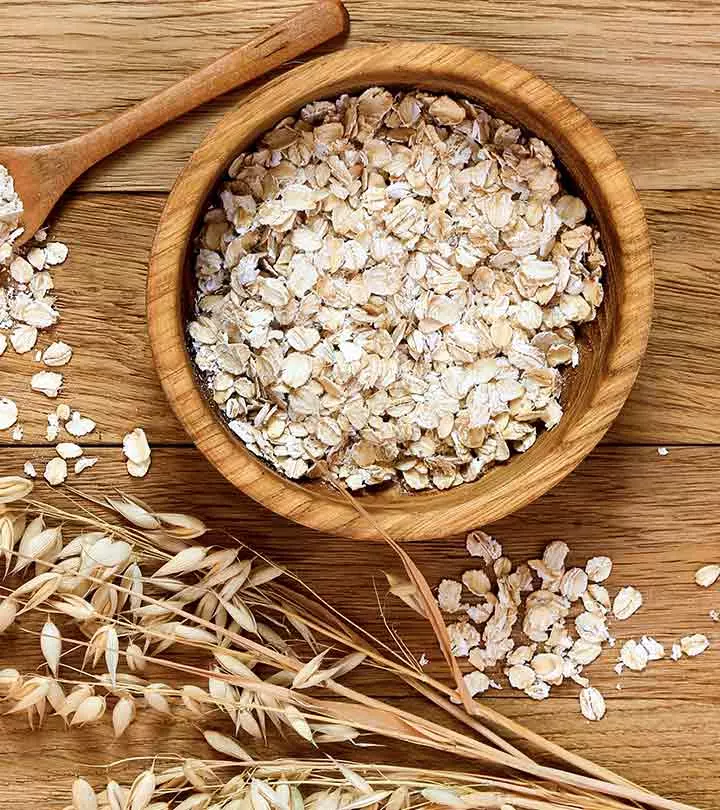


Community Experiences
Join the conversation and become a part of our empowering community! Share your stories, experiences, and insights to connect with other beauty, lifestyle, and health enthusiasts.